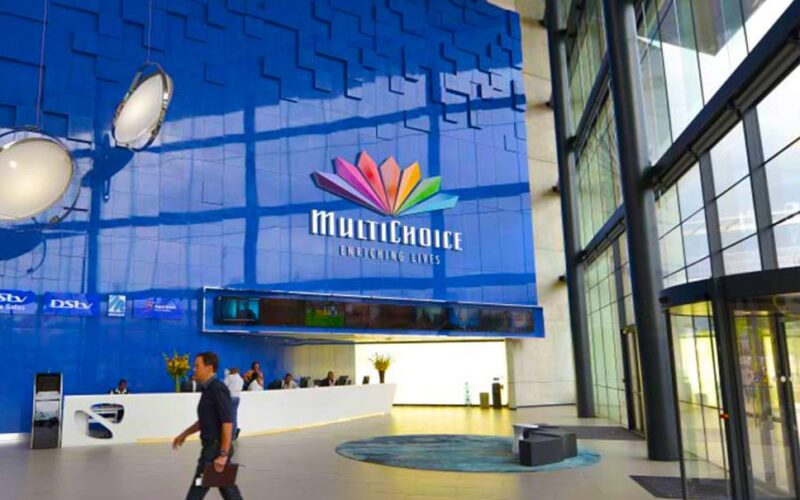MultiChoice CEO Byron du Plessis has announced plans for substantial changes aimed at boosting the company’s subscriber numbers, stating they are “prepared to reverse past decisions that have not worked.” The new leader of Africa’s largest pay-TV operator is implementing what he calls a “wholesale overhaul” of the DStv service as the company battles significant subscriber losses across its key markets.
In South Africa, DStv subscribers declined from 7.6 million to 7.0 million, and in the Rest of Africa region, it shrank from 8.1 million to 7.5 million. The pressure has been attributed to weak consumer environments across markets, forcing MultiChoice Group to fundamentally rethink its approach after years of incremental changes.
Breaking From Traditional Bundling
In recent interviews, du Plessis has discussed the potential for unbundling SuperSport from the higher-tier DStv packages, a move that would represent a seismic shift in the company’s long-standing strategy. However, he emphasized that unbundling SuperSport from DStv must deliver revenue and profit growth for the group and must not serve to erode the financial picture further.
The sports content unbundling consideration reflects broader industry trends where consumers increasingly demand à la carte options rather than expensive bundled packages. MultiChoice has made no significant changes to its packages or its go-to-market strategy in the past 12 years, suggesting that an overhaul is overdue.
Comprehensive Strategic Review
Du Plessis told TechCentral: “We are in a process that will come to an end in the next six months, and we will put all these models together and ask what makes most sense.” This timeline suggests MultiChoice is conducting a comprehensive review of its entire business model, not just minor package adjustments.
The changes being considered go far beyond the SuperSport unbundling discussion. The company aims to revamp its channel bouquets and attract younger viewers, whose media consumption habits differ significantly from older generations.
Market Pressures Drive Innovation
The subscriber decline reflects broader challenges facing traditional pay-TV operators globally. In the year to March 2024, MultiChoice saw drops in not only its Premium segment (DStv Premium and DStv Compact Plus, down 8%) but also in its mid-market (DStv Compact, down 9%) and mass market segments (down 2%).
These losses come despite MultiChoice’s efforts to add value to existing packages. Recently, MultiChoice announced that Premium, Compact Plus, and Compact subscribers now have an additional concurrent stream on any device, while Compact customers will be getting five new channels including SuperSport Action, CBS Justice, Africa Magic Showcase, Curiosity and the History Channel.
Leadership Transition and Vision
Du Plessis officially took over as CEO of MultiChoice South Africa in December 2024, replacing the previous CEO who resigned after almost 10 years in the role. Previously serving as Corporate CFO of MultiChoice Group Limited, du Plessis brings extensive financial and operational experience from various senior roles within the group.
His financial background may prove crucial as the company navigates the delicate balance between attracting price-sensitive consumers and maintaining profitability. The CEO’s willingness to acknowledge past strategic mistakes and pivot dramatically suggests a data-driven approach to the turnaround effort.
Canal+ Acquisition Context
The strategic overhaul comes as MultiChoice operates under the shadow of the pending Canal+ acquisition. The French media giant’s $3 billion takeover of MultiChoice was recently approved by South African regulators, creating additional pressure to demonstrate growth potential and operational efficiency.
The timing of du Plessis’s strategic announcements may be designed to show Canal+ that MultiChoice is proactively addressing its challenges rather than waiting for new ownership to impose changes.
Competitive Landscape Challenges
MultiChoice faces intensifying competition from global streaming giants like Netflix, Amazon Prime Video, and Disney+, all of which have expanded aggressively across African markets. These platforms offer more flexible pricing, on-demand content, and multi-device accessibility that appeals to younger consumers.
Additionally, local streaming services and piracy remain significant challenges. The company has been investing heavily in anti-piracy measures while simultaneously trying to make its legitimate services more attractive and affordable.
Financial Implications
The subscriber losses have direct revenue implications for MultiChoice, particularly given its reliance on subscription fees. In 2024, the company cut 12 channels, with removals outweighing additions—the only new channel introduced was 1Max, available to Premium and Compact Plus subscribers.
Cost-cutting measures like channel reductions may provide short-term savings but risk further alienating subscribers who feel they’re receiving less value for their money. Du Plessis’s promise of major changes suggests a move away from this approach toward more customer-centric strategies.
Technology and Innovation Focus
Beyond package restructuring, MultiChoice is likely to invest more heavily in technology infrastructure and user experience improvements. The company’s DStv streaming platform needs significant enhancements to compete effectively with international streaming services.
Digital transformation initiatives may include improved mobile apps, better recommendation algorithms, enhanced streaming quality, and more flexible viewing options across devices.
Looking Ahead
With du Plessis indicating that the strategic review process will conclude within six months, the market can expect concrete announcements about new packages, pricing structures, and service offerings by early 2025. The success of these changes will be crucial not only for MultiChoice’s standalone performance but also for demonstrating value to its new Canal+ ownership.
The broader African pay-TV market will be watching closely, as MultiChoice’s strategic shifts could influence industry-wide trends. If successful, the company’s new approach may provide a roadmap for other traditional broadcasters facing similar streaming disruption challenges.
For consumers, the promised changes offer hope for more flexible, affordable, and relevant entertainment options. However, the ultimate test will be whether MultiChoice can execute on these promises while maintaining the content quality and sports coverage that has historically differentiated DStv in the African market.
The next six months will be critical in determining whether du Plessis can successfully reverse MultiChoice’s subscriber decline and position the company for sustainable growth in an increasingly competitive landscape.












